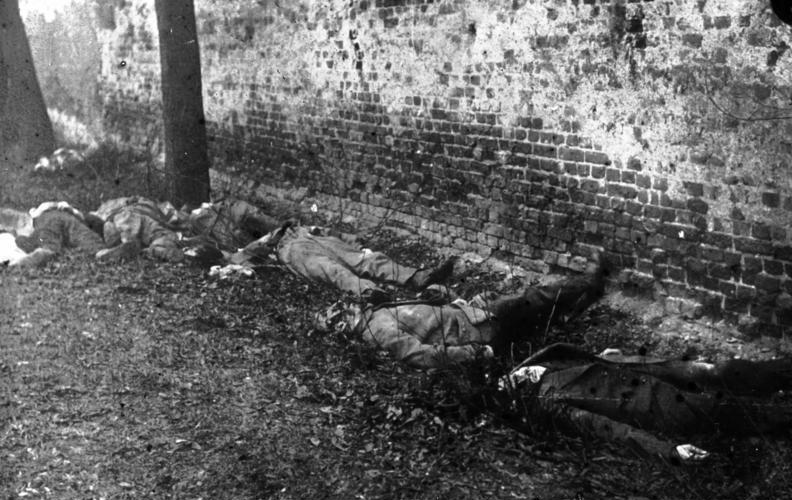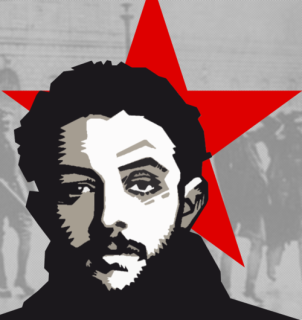 April 6th, 1919. Bavarian Soviet Republic is established in Munich. It was essentially a clone of the Hungarian Soviet Republic and thus the second attempt of Comintern (i.e. of the Bolshevist leadership of the Soviet Russia and of its leader Vladimir Lenin) to use the Communist “fifth column” to seize power in the European country. With the ultimate objective of transforming the unfortunate nation in question into the Communist hellhole (in a very natural sense).
April 6th, 1919. Bavarian Soviet Republic is established in Munich. It was essentially a clone of the Hungarian Soviet Republic and thus the second attempt of Comintern (i.e. of the Bolshevist leadership of the Soviet Russia and of its leader Vladimir Lenin) to use the Communist “fifth column” to seize power in the European country. With the ultimate objective of transforming the unfortunate nation in question into the Communist hellhole (in a very natural sense).
However, this attempt was a bit more complicated than a previous one. It was made almost immediately after the Communist uprising in Berlin (the so-called “Berlin March Battles”) failed – and failed miserably.
Lenin’s idea apparently was to use the total mess in Bavaria (which was spectacular even by the standards of chaotic revolutionary Germany) to seize power in Munich – and subsequently in the whole Bavaria. And then use the unfortunate former kingdom as a springboard, a bridgehead, a base area, a staging ground for launching an uprising that will ultimately bring Communists to power in the whole Germany.
This time the “Kremlin puppet” nature of the Communist government was even more evident as all three leaders of the Bavarian Soviet Republic were Russian émigrés. And dutifully (and predictably) took orders directly from the Soviet Bolshevik leader Vladimir Lenin.
Eugen Leviné – the official head of the Communist state – immediately began to enact hardcore Bolshevist reforms, which included forming a “Red Army” from factory workers, seizing cash (i.e. robbing every Bavarian who was even remotely wealthy), food supplies, and privately owned guns, expropriating apartments deemed ‘luxurious’ by his gang, nationalizing factories and other “means of production”… in short, following the “Soviet Russian blueprint” to a “T”.
Crackdown on the Catholic Church was equally ruthless – one of Munich’s main churches was taken over and made into a revolutionary temple dedicated to the “Goddess of Reason.” Bavaria was to be in the vanguard of the Bolshevization of Europe, with all workers to receive military training.
One of the Catholic officials mistreated (to put it mildly) by the Communists was one Eugenio Pacelli – then papal nuncio in Bavaria (and the future Pope Pius XII). This highly unpleasant experience made the future cardinal and pope a committed, dedicated and diehard anti-Communist – and thus a firm supporter of Adolf Hitler and the Third Reich.
Leviné’s comrade Max Levien, following Lenin’s orders (no surprise here), arrested aristocrats and other members of the Munich elite (more precisely, took them hostage).
During Leviné’s short reign, food shortages quickly became a problem (which happens every time one decides to implement the economic ideas of Karl Marx). Especially painful the absence of milk. Public criticism over the milk shortage turned political, precipitating the communist government to publicly declare:
“What does it matter? … Most of it goes to the children of the bourgeoisie anyway. We are not interested in keeping them alive. No harm if they die – they’d only grow into enemies of the proletariat.”
Like in the Hungarian Soviet Republic, these harsh and genuinely insane measures met some serious resistance. On April 13th, troops loyal to the Hoffmann government-in-exile, along with the Kampfbund (combat league) led by… Thule Society, attempted to overthrow the Communist government. The coup failed (as it did in Hungary later) which ultimately resulted in the execution of hostages – members of the Thule Society on April 20th.
Which turned out to be a big mistake – real big. Enraged beyond belief, the leaders of the Thule society put together a formidable force of Freikorps and other right-wing paramilitary units that on May 1st broke through Communist defenses and entered Munich.
It was a bloodbath. A massacre. Using flame-throwers, heavy artillery, armored vehicles, even combat aircraft, the Freikorps practically annihilated the Communist “Red Army”. More than 600 were killed, including a prominent anarchist (and a Commissioner of Enlightenment and Public Instruction) Gustav Landauer.
Eugene Leviné was captured, tried by a military court, found guilty of treason (which was actually true and correct), sentenced to death and executed by a firing squad in Stadelheim Prison in Munich. Max Levien escaped… only to be arrested, tried, sentenced to death and executed in the Soviet Union in 1937 – during Stalin’s Great Purge.
From the “life and death of the Bavarian Soviet Republic”, Adolf Hitler and the Nazis derived exactly the same two conclusions as they did from its Hungarian “brother” (or “sister”).
First, that the Bolshevist Soviet Russia (subsequently the Soviet Union) were the existential threat to European countries, Europe and the whole Western civilization. Which was undoubtedly correct.
The second conclusion was no less undoubtedly incorrect. It was derived from the undeniable fact that Eugene Leviné, Max Levien, Gustav Landauer, Erich Mühsam and other leaders of the Bavarian Soviet Republic were Jewish.
Hence, the Nazis (incorrectly) viewed the Bavarian Soviet Republic and the whole Communist project as the key component of the “global Jewish conspiracy” to establish full power and control over our world (i.e. the whole human civilization). Which for practical purposes meant destroying the latter and transforming it into a global totalitarian Jewish-dominated Bolshevist state.
Subsequently ignoring the no less undeniable fact that Max Levien (and thousands and thousands of Jews by blood) were arrested, tried, sentenced to death and executed by the Bolshevist Soviet state.
Active participants in the Freikorps units – those of Oven, Franz Ritter von Epp, and Hermann Erhardt – that suppressed the Bavarian Soviet Republic included many future powerful members of the Nazi Party, including Rudolf Hess, a member of the Freikorps Epp.
It appears that the short-lived but bloody Bavarian Soviet Republic became the “final straw” that convinced the Thule Society of the seriousness and of the existential nature of the Bolshevist threat to Germany, Europe, the Western civilization – and to the whole Western civilization.
Which made its leaders commence the search for the Messiah – the Chosen One – who would lead Germany and its allies to victory in the existential war with the Bolshevist hordes – and their leader, the “Red Tamerlane” Joseph Stalin.
Just two months later they had their Messiah – one previously totally unknown Gefreiter Adolf Hitler.
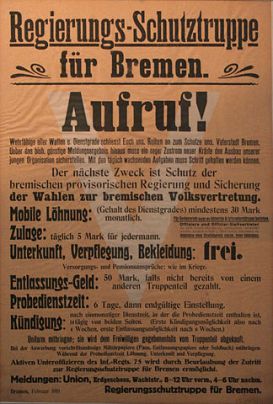 January 10th, 1919. The Bremen Soviet Republic is proclaimed. Although officially this short-lived Bolshevist state was, indeed, established on January 10th, 1919, for all practical purposes it was founded two months earlier – even before the collapse of Imperial Germany (the Second Reich) and the proclamation of Weimar Republic.
January 10th, 1919. The Bremen Soviet Republic is proclaimed. Although officially this short-lived Bolshevist state was, indeed, established on January 10th, 1919, for all practical purposes it was founded two months earlier – even before the collapse of Imperial Germany (the Second Reich) and the proclamation of Weimar Republic.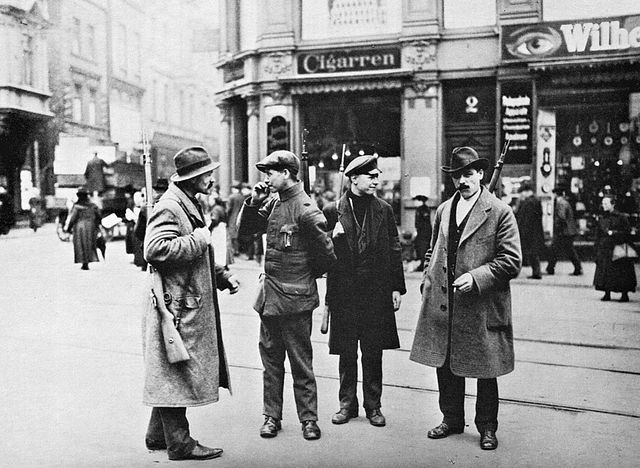
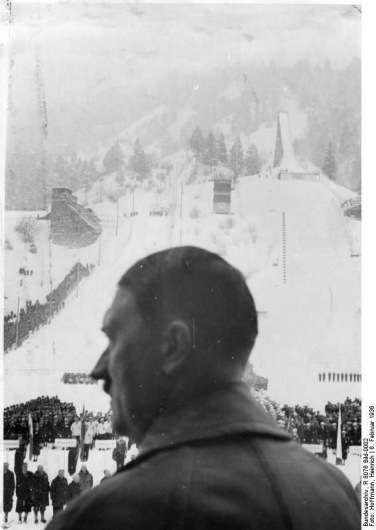 Now the gargantuan question is: WHY??? Why on Earth such prominent and powerful individuals – both military and civilian – wanted a total political nobody so badly that they sent a military aircraft (!!!) for him? To Munich, of all places…
Now the gargantuan question is: WHY??? Why on Earth such prominent and powerful individuals – both military and civilian – wanted a total political nobody so badly that they sent a military aircraft (!!!) for him? To Munich, of all places…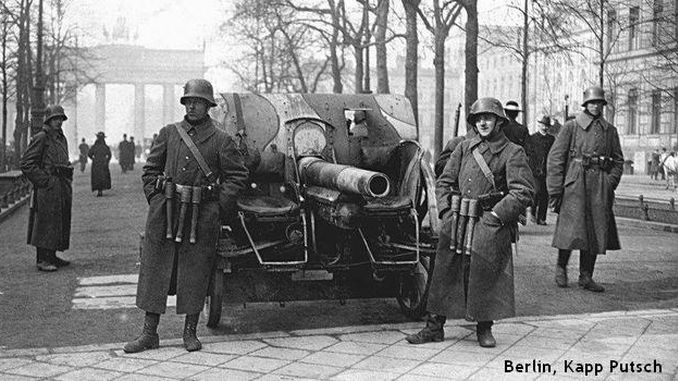
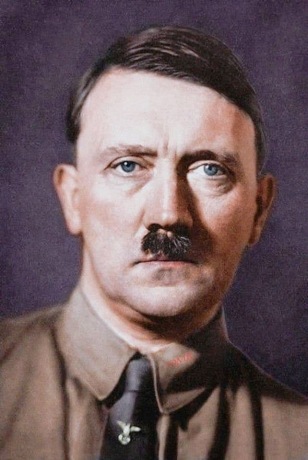 July 10-19th, 1919. Adolf Hitler attends the “national thinking” courses. Transfiguration provided Adolf Hitler with the capabilities of the greatest orator of the XX century. But to use these capabilities in the most efficient way, he had to go through at least some basic training in public speaking.
July 10-19th, 1919. Adolf Hitler attends the “national thinking” courses. Transfiguration provided Adolf Hitler with the capabilities of the greatest orator of the XX century. But to use these capabilities in the most efficient way, he had to go through at least some basic training in public speaking.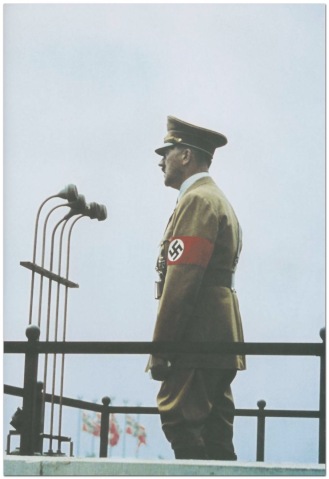 Early June of 1919. Adolf Hitler is recruited as a Special Intelligence and Propaganda Agent of the Reichswehr. Although the actual Transfiguration of Adolf Hitler took place during the first week of July, the real leaders of Thule (and possibly Vril) Society made the corresponding decision two months earlier – most likely, in mid-May.
Early June of 1919. Adolf Hitler is recruited as a Special Intelligence and Propaganda Agent of the Reichswehr. Although the actual Transfiguration of Adolf Hitler took place during the first week of July, the real leaders of Thule (and possibly Vril) Society made the corresponding decision two months earlier – most likely, in mid-May.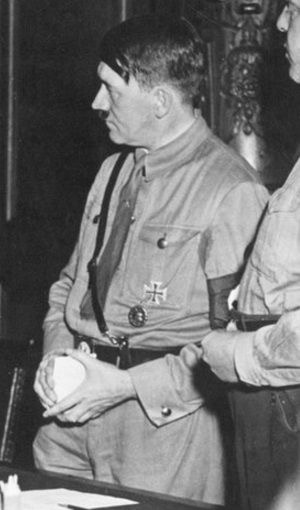 On May 6th, 1919 Lt. General Burghard von Oven – commander-in-chief of the “White” anti-Communist forces declared Munich secure (i.e. free of Communist insurgents). Although the Hoffman government was nominally restored, the actual power in Munich was now in hands of the military.
On May 6th, 1919 Lt. General Burghard von Oven – commander-in-chief of the “White” anti-Communist forces declared Munich secure (i.e. free of Communist insurgents). Although the Hoffman government was nominally restored, the actual power in Munich was now in hands of the military.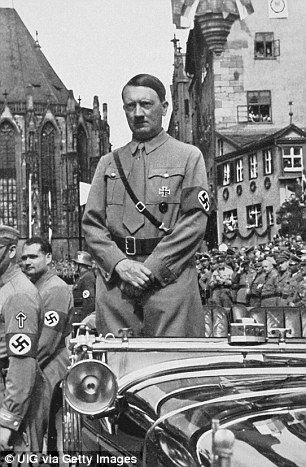 How did it happen? How was Adolf Hitler not only noticed by the Thule Society, but also identified by the latter as the Chosen One – the one worthy of Transfiguration?
How did it happen? How was Adolf Hitler not only noticed by the Thule Society, but also identified by the latter as the Chosen One – the one worthy of Transfiguration? April 6th, 1919. Bavarian Soviet Republic is established in Munich. It was essentially a clone of the Hungarian Soviet Republic and thus the second attempt of Comintern (i.e. of the Bolshevist leadership of the Soviet Russia and of its leader Vladimir Lenin) to use the Communist “fifth column” to seize power in the European country. With the ultimate objective of transforming the unfortunate nation in question into the Communist hellhole (in a very natural sense).
April 6th, 1919. Bavarian Soviet Republic is established in Munich. It was essentially a clone of the Hungarian Soviet Republic and thus the second attempt of Comintern (i.e. of the Bolshevist leadership of the Soviet Russia and of its leader Vladimir Lenin) to use the Communist “fifth column” to seize power in the European country. With the ultimate objective of transforming the unfortunate nation in question into the Communist hellhole (in a very natural sense).